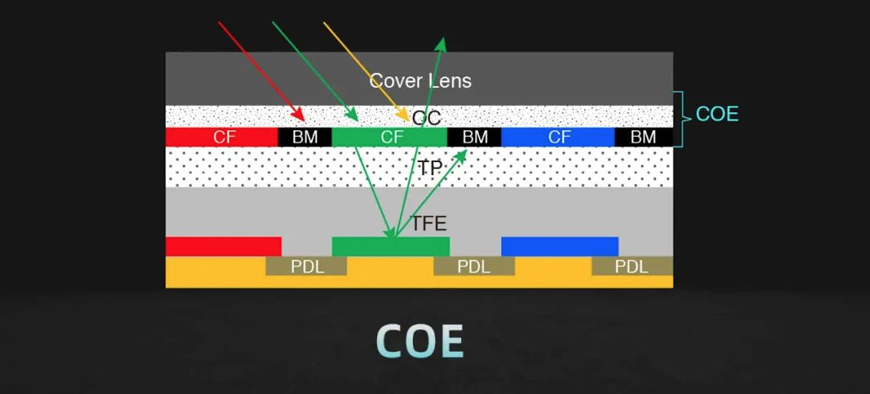- Global Sales:
- Name: Zhang Chenwei
- Email: zhangcw@visionox.com
- Other Sales:
- Name: Jiang Zhiyong
- Email: jiangzy@visionox.com
Lighter and Slimmer Displays and Longer Battery Life: Visionox Powers the Acceleration of the Foldable Era from Niche to Mainstream
Author: Release Time: 2023-10-18
When presented with a foldable phone featuring a sizeable display, slim design, extended battery life, and a more affordable price, would it be your next smartphone or your first foldable phone?
On October 12, following the launch of Honor Magic V2 and Honor V Purse, another foldable phone, Honor's Magic Vs2 featuring screens supplied by Visionox, was unveiled.

Data indicates that foldable screens are experiencing a rapid surge in popularity. Sales of foldable smartphones in the Chinese market reached 2.25 million units in the first half of this year, with an estimated annual sales exceeding 5 million units, up 78% year-on-year, according to CINNO Research. Looking at the world, Counterpoint predicts that the global shipment of foldable smartphones will reach 55 million units by 2025 and is expected to surpass 100 million units by 2027, showing a strong growth momentum.
With Visionox's innovative technologies, foldable smartphones are becoming mainstream. As a pioneer in the AMOLED industry, Visionox has long been engaged in foldable screens, and achieved breakthroughs in screen slimness, low power consumption and other aspects. Together with terminal manufacturers, Visionox has fully increased foldable screen market penetration, delivering an efficient and convenient foldable experience to consumers.
Lighter and Slimmer Displays: breaking boundaries between foldable and bar phones, and leading foldable screens into the millimeter-level era
Slimness is the first technological strength of foldable screens. Visionox keeps improving its technologies that make foldable screens slimmer.
Padbending R Reduction Technology
The bottom bezel is thinned with Visionox's Padbending R reduction technology, rendering the whole device more likely to get lighter and thinner.

On-cell Touch-Display Integrated Technology
By embedding a touch panel between a display screen and a polarizer, touch and display integration is realized. This technology enables a 30% decrease in screen thickness compared to traditional flexible screens, significantly reducing the screen-to-body ratio and laying the foundation for making slimmer screens from the source.
Polarizer-Free Technology
When a foldable screen is equipped with a thicker polarizer, the module thickness is reduced by more than 50 microns with Visionox's polarizer-free technology. It enables improvements in performance and transmittance and a reduction of over 25% in power consumption.

Module Thinning Technology
Visionox achieves a slimmer bezel, more invisible crease and smaller bend radius without prejudice to impact resistance through backplane gum thinning, stacking module thinning and module materials optimization, etc.
Long Endurance: Low-power technologies solve battery life problems with foldable phones
How to make sure the big-screen foldable phone has minimal weight and a long battery life?
In terms of low power consumption, Visionox has developed a number of innovative technologies and has always been at the forefront of the industry. Visionox is committed to reducing power consumption through low-frequency driving, light extraction efficiency (LEE) improvement and material system upgrading, and has launched low-power AMOLED displays.
LTPO Technology
The CINNO Research data reveals that in the second quarter of 2023, sales of foldable smartphones equipped with LTPO backplanes accounted for 63% of the total in the Chinese foldable market. By virtue of its low power consumption, LTPO has quickly taken over the foldable market dominated by big-screen smartphones, and gradually become the mainstream backplane solution for China's foldable smartphones.

Visionox took the lead in releasing 1Hz low-power AMOLED displays, enabling a dynamic refresh rate of 1-120 Hz. It can support the phone to automatically reduce the screen refresh rate to 1Hz in low refresh rate application scenarios such as Always On Display (AoD) and reading, thus reducing power consumption. Moreover, when users switch to high refresh rate application scenarios such as video and games, the display can support a 120Hz high refresh rate, making the display drag-free and smoother.
EnV ALT Low-Frequency LTPS Technology
Visionox launched "the world's first low-frequency LTPS-TFT low-power display solution". It can reduce power consumption by approximately 25% when applied to 1Hz AoD for LTPS smart wearable displays and by more than 10% when applied to 30Hz for LTPS cell phone displays.

This low-power technology requires no upgrades to production lines, purchase equipment, or significantly increase production processes, thus avoiding additional costs. Therefore, more economical display solutions low in power consumption will be delivered to customers and end users.
HLEMS High Performance Optical Extraction Technology
This technology improves the light extraction efficiency and reduces the power consumption by an average of 10%, by modifying the light propagation path and extracting the light trapped inside the device through the redesign of micro structures and the optimization of film refractive indexes.

VM7 Material System
With improvements in every generation of material systems from VM4, VM5, VM6 to VM7, Visionox remains dedicated to delivering lower power consumption and smoother experience.
Through reconfigured materials and devices, Visionox's new VM7 material system optimizes device capacitance and electron-hole balance to improve reliability. Compared with the previous generation of materials, this material could reduce power consumption by about 10% and increase lifespan by over 10%.
Striving for excellence among peers. In the future, Visionox will make further breakthroughs in foldable screens to help terminal manufacturers enhance their product competitiveness, and bring advanced technologies to consumers.

